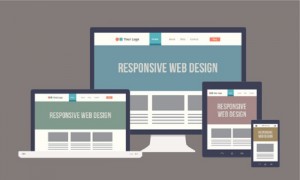 Web browsing on a mobile device can be extremely frustrating.
Web browsing on a mobile device can be extremely frustrating.

You know what it’s like: pinching, zooming, scrolling and squinting — never really knowing what you’re going to get. While mobile marketing initiatives have grown in leaps and bounds these past few years, an ideal experience for consumers is still severely lacking.
Smartphone Users Want a Smarter Mobile Experience
Let’s face it, a few years ago when smartphones and tablets became more prevalent, marketers jumped at the opportunity to “consider mobile” and maybe even build some apps. Now, mobile devices have evolved from being “something to consider in your marketing mix” to a concrete pillar in all marketing programs. There are three reasons why:
1. Consumers have picked smartphones and tablets as one of their preferred method of consuming content and making key purchase decisions.
We’ve all heard the staggering stats behind smartphone usage (and seen it firsthand on the subway). More than half of the population has one, with eMarketer boldly estimating that the number of U.S. consumers with a smartphone will double from 93.1 million in 2011 to 192 million in 2016.
What are they using them for? Everything.
According to a recent study by Google/Nielsen (Mobile Search Moments, March 2013) on the drivers behind mobile search, 77 percent of all people use smartphones as their preferred method of finding information while at home or work (even if a computer was available) because smartphones are simply more convenient. In addition to exposing our laziness, the study also found that 45 percent of all mobile searches are “goal-oriented and conducted to help make a decision.” In fact, three out of four mobile searches triggered a follow-up action such as a visit to a store or even a purchase.
2. Other marketers are making it a top priority this year.
According to a recent report by eConsultancy and Adobe, 30 percent of respondents listed mobile optimization as a top priority for 2013, with 43 percent stating mobile optimization was the most exciting digital opportunity for them this year.
3. A positive mobile experience matters to consumers.
Not only are consumers browsing with their smartphones, but they are also making decisions, connections and assumptions about your brand. A less-than-savvy mobile experience will negatively impact how a consumer perceives your brand overall. A recent survey conducted by Google confirms that 67 percent of people said a mobile-friendly site would make them more likely to buy a product (or use a service), and 74 percent stated they would be more likely to return to a site if it was mobile friendly for future needs. However, more than half (52 percent) of the respondents stated that a negative experience (e.g., non-friendly site) would make them less likely to engage with a certain company going forward.
Flex, Adapt and Respond: The Impetus Behind Responsive Design
So, you need your site to adapt for these hoards of consumers eager for a more optimized on-the-go experience. Now what? For many marketers, you have a decision to make: Do you create a mobile-ready site, mobile-only site or a responsive site? If the differences are a bit unclear for you, here’s a high-level breakdown:
- Mobile-ready: This means your website can generally be viewed on mobile devices. It’s the easiest to create for your developers, but it’s not really ideal for users. (Think back to those “pinching and zooming” woes discussed earlier.)
- Mobile-only: If a mobile-ready site doesn’t work, some companies build a completely new mobile site altogether. This uses separate templates (more work for developers) and means you’ll also need to maintain a separate site and codebase. Other concerns arise with this method like having duplicate content for search engines, differences in how content looks on various devices, etc.
- Responsive: A responsive site uses a single codebase that’s adaptable across all devices (computer to tablet to phone and beyond). This means no duplication of content (create once, and publish once) and that the site is presented in a very flexible, user-friendly way. The experience “responds” to the device and screen dimensions available.
“A million screens have bloomed, and we need to build for all of them.”
- Mashable’s “Why 2013 is the Year of Responsive Design”
Responsive design is rapidly becoming the preferred method for building mobile sites. It’s certainly ours at Digital Surgeons, so much so that we created our open source responsive framework, Gumby, for developers looking to fully embrace responsive design and customize their own sites.
Why all the Hype Around Responsive Web Design (RWD)?
A responsive website is flexible — but controlled — and it is built to adapt to whatever screen a user is viewing it on. This means a streamlined and simplified experience for consumers; for marketers, it means you don’t need to be working to get multiple versions of your site created. Create one. Publish once. Done and done.
Try it out: Open a few websites right now on your computer, and then on your phone, or just use this fun tool to try it out.
Change the dimensions of your browser window. What happens? Now, visit the same site from your phone and see if it reformats or not. Is the window cut in half on your computer? Is the font tiny, or are the images skewed on your phone?
Now, take a look at how the experience could be optimized with a responsive site:
It’s All About the CSS (and a Little Bit of Javascript)
The key to successful responsive design lies in CSS (Cascading Style Sheets that are also called media inquiries), which are device-neutral, allowing content to be displayed consistently while adapting the layout to fit any device for a more positive viewing experience. Images and content are scalable, flexible and streamlined.
A responsive site like the one shown above reorganizes information, resizes images and prioritizes content depending on the device that it’s being viewed on. Plus, speed and content consistency are never compromised (It’s the same site, same design and same brand experience.). It’s more than friendly and more than an app — a site that’s truly “responsive.” This allows you to stick to your brand using a consistent design system.
Due to its controlled flexibility, responsive design has quickly become the standard for modern Web design. It also points to a greater evolution in the relationship between content, design and technology. We anticipate that sometime very soon content will no longer drive your technology or design strategy, but rather, marketers will work hand-in-hand with designers and developers to implement programs that are fully responsive and supportive of each other.
- What is the content?
- How will it appear for consumers?
- Where will it be consumed?
Three Ways to Get Started with Responsive Design — Right Now
- If you want to dabble a bit in responsive design, talk to your developers/designer or agency to consider what kind of experience you’re currently giving your consumers. Are you being strategic and progressive with your mobile strategy?
- Next, take a look at your content. Is it ready to take center stage? Establishing your content strategy and determining what needs to be optimized for different devices will be key here, and oftentimes, it entails a content audit.
- Finally, challenge your assumptions. Is your team really equipped to build a responsive site? It entails taking a serious look at how you’ve currently built your site and means establishing a new set of processes for how your content will respond to certain devices.
The time for you to build a strategy for mobile marketing is now (if not earlier). But, before you react, think through the implications a haphazard implementation could cost your brand. Responsive design may not be the quickest solution right now, but soon it will be the only solution. Why not lead the charge?
Check out Peter’s SlideShare presentation for more information on building responsive websites.




